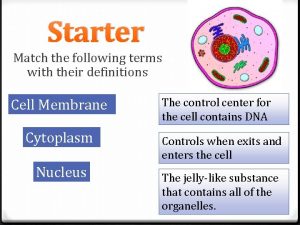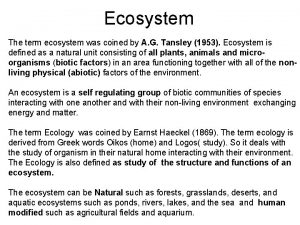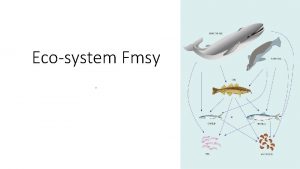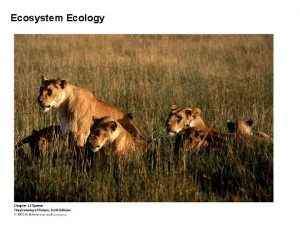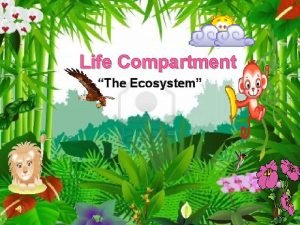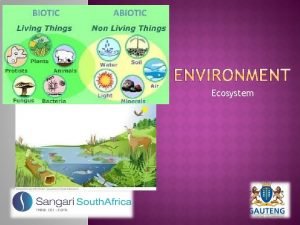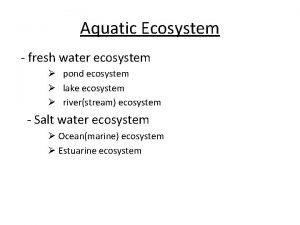Starter Read the Ecosystem Worksheet Match the term









- Slides: 9

Starter § Read the ‘Ecosystem’ Worksheet. § Match the term (ecosystem, community, habitat or population) to the sentences 1 -10. § Write the term and matching sentence in your jotter for 1 -10.

Learning Intentions § Abiotic and biotic factors affecting ecosystems. § Sampling organisms in a habitat. Success Criteria § Describe what is meant by abiotic and biotic factors and give an example. § State how biotic and abiotic factors can be measured. § Describe a method of sampling organisms in a habitat.

Abiotic and Biotic Factors § An ecosystem includes all the living things, their nonliving surroundings and the factors which affect their lives. § Factors in the ecosystem related to living things are called biotic factors e. g. the amount of food, disease, the amount of grazing and hunting. § Non-living factors in the ecosystem are called abiotic factors e. g. light, temperature and moisture.

Measuring biotic and abiotic factors § Abiotic factors can be measured using Light meters, moisture meters and thermometers. § Biotic factors can be measured using quadrats, pitfall traps, net sampling. § Sampling is very important to measure the richness of the biodiversity of an ecosystem.

Starter § 1. Give an example of a biotic factor affecting habitats. § 2. What does the term population mean? § 3. What is the purpose (job) of a habitat?

Sampling Organisms § How can we find out how many organisms live in a habitat or ecosystem? § How would catch small animals? . . § How would you count plants? . . .

Sampling Organisms § We could find out exactly what is living in a particular ecosystem by collecting and counting all the organisms. § This would be difficult and would take a long time. § However, we can get some idea of the amount and kinds of living things in an ecosystem by taking a sample. 7

Sampling Small Animals § Sweep netting is used to catch small animals living in vegetation. § Potato traps can be used to attract small animals, particularly snails and slugs.

Pitfall Trap Pitfall traps are used to trap small animals moving across the surface of the ground in habitat. § We can then investigate the type and number collected. soil surface § lid to keep out rain plastic cup
 Match the following terms to their definitions
Match the following terms to their definitions Nth term starter
Nth term starter That's a proud little beige british bulldog
That's a proud little beige british bulldog Listen read and match
Listen read and match Read the descriptions and match
Read the descriptions and match Look at the pictures and match
Look at the pictures and match Learn and share in english 1
Learn and share in english 1 Read the text below and complete the task
Read the text below and complete the task Who coined ecosystem
Who coined ecosystem Match the wave term to its correct description.
Match the wave term to its correct description.
